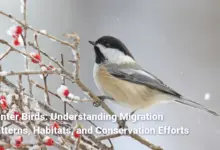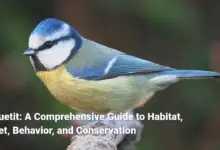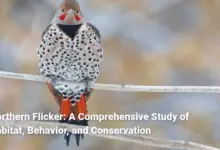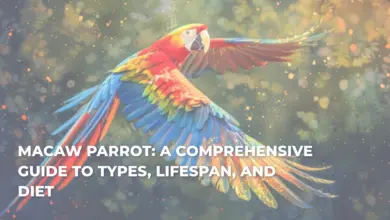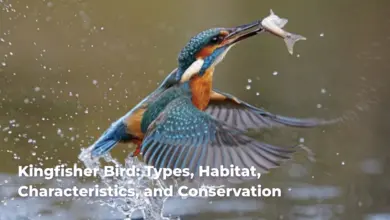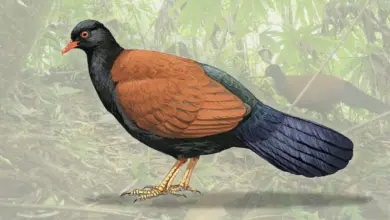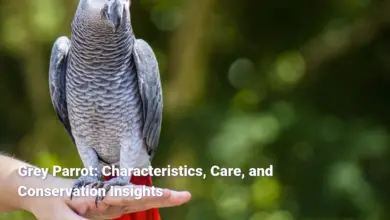Bird of Paradise: Unique Traits, Diet, and Conservation Status
The Captivating Beauty and Courtship Displays of the Bird of Paradise
The Bird of Paradise is often celebrated for its extraordinary beauty and flamboyant courtship displays. With vibrant plumage that rivals any rainbow and intricate mating dances that could inspire a ballet, this bird represents the epitome of avian spectacle. Found predominantly in the tropical rainforests of New Guinea and the surrounding islands, the Bird of Paradise has captivated ornithologists, naturalists, and casual observers alike.
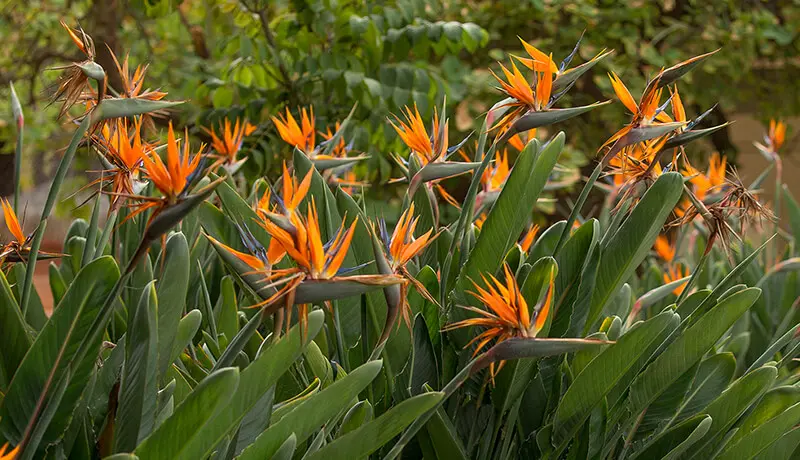
From the delicate, swirling patterns of their feathers to their complex social structures, the birds of paradise embody the richness and diversity of life in the rainforest ecosystem. This article delves deep into the world of these enchanting birds, exploring their habitats, characteristics, diets, and the threats they face, while celebrating their cultural significance across the globe.
Habitat and distribution of bird of paradise
Birds of paradise predominantly inhabit tropical rainforests, thriving in environments characterized by dense foliage, high humidity, and rich biodiversity. Imagine vibrant green canopies stretching high above, broken only by sun-drenched spots where exotic fruits flourish, creating a paradise for these unique avian species. These settings create a sanctuary that not only serves as a refuge but also provides ample resources critical to their survival.
Tropical Rainforests as Ideal Environments
The tropical climate of these rainforests offers warmth and moisture, allowing a variety of life to flourish. Comparable to a bustling marketplace, these forests teem with life, including countless plant species that contribute to the diet of birds of paradise. The intricate web of life within these ecosystems supports not only the birds but also numerous insects, fruits, and nectar, all of which are vital components of their diet.
Birds of paradise typically favor lowland rainforests, where the canopy is thick, and the underbrush is flourishing, providing shelter from predators. However, many species are also found in montane forests, showcasing their remarkable adaptability to varying altitudes. Notably, some species, like the ribbon-tailed astrapia, can thrive in mountainous regions, further indicating the diversity of their habitat preferences.
Habitat loss due to deforestation and human encroachment poses a significant threat to these remarkable birds. As their environments are cleared for agriculture, logging, and urban development, the delicate balance of their rainforest ecosystems is disrupted. This raises concerning implications not just for the birds themselves but for the health and longevity of the entire ecosystem they inhabit.
Geographic Range of Bird of Paradise Species
The geographic distribution of birds of paradise is relatively restricted, with many species endemic to specific regions within their habitat. The central hub of their existence is New Guinea, the world’s second-largest island, where complex and biodiverse ecosystems provide ideal conditions for their survival. Areas such as the Aru Islands, Yapen, and parts of Eastern Australia also host populations of these exquisite birds.
| Region | Notable Species |
|---|---|
| New Guinea Mainland | Raggiana Bird-of-Paradise, Wilson’s Bird |
| Surrounding Islands | Twelve-wired Bird-of-Paradise |
| Eastern Australia | King Bird-of-Paradise |
This restricted range makes biodiversity conservation efforts critically important, as many species are found only in specific locations and are threatened by habitat destruction.
Characteristics of Bird of Paradise
Birds of paradise are astonishingly diverse both in appearance and behavior, making them a source of intrigue in the avian world. With ornate feathers that dazzle like precious gems under sunlight, these birds are a testament to the wonders of evolution and natural selection. The males, in particular, are adorned with striking colors and patterns, designed to capture the attention of potential mates while showcasing their genetic fitness.
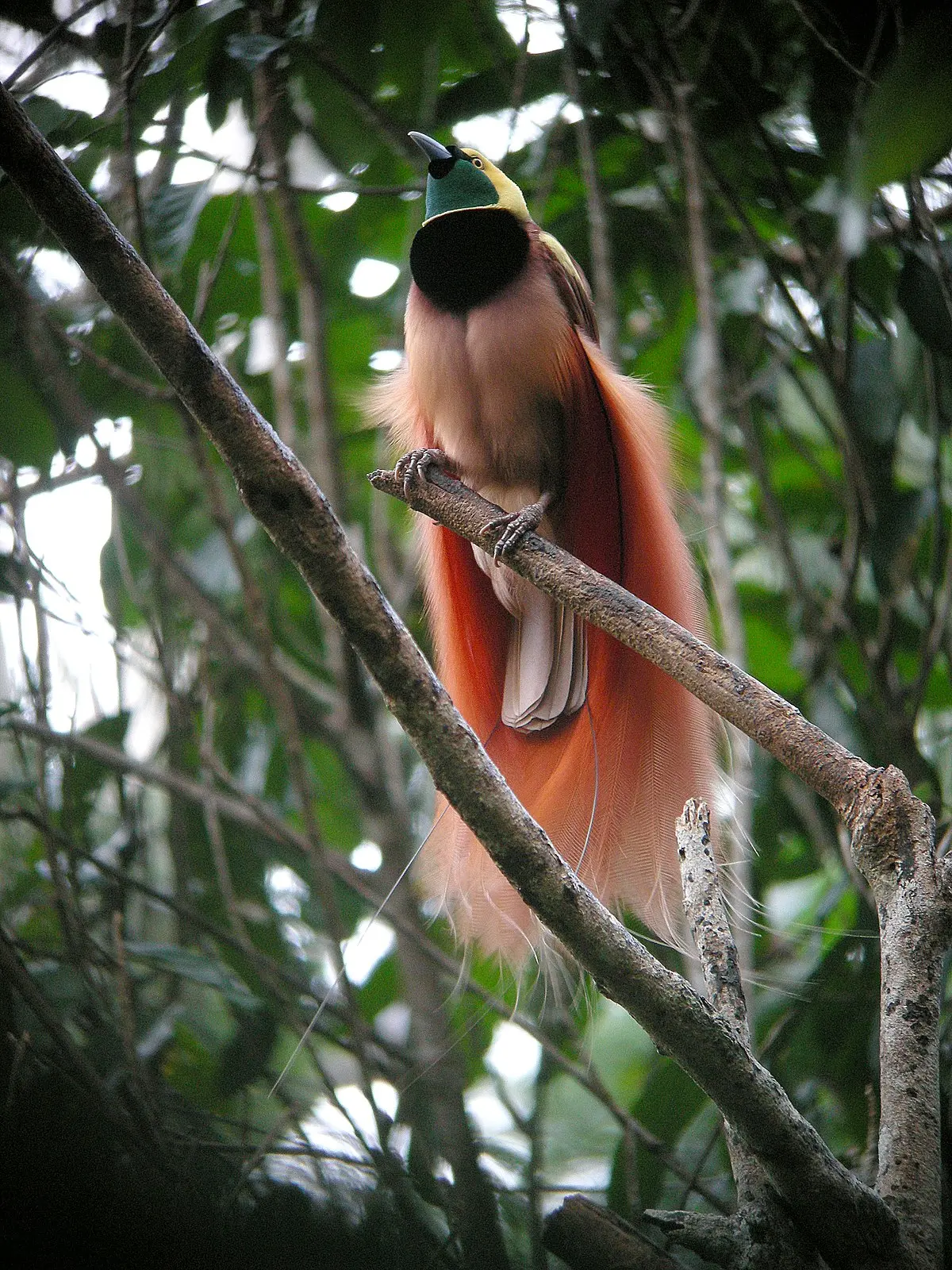
Unique Plumage and Coloration
One of the most captivating traits of birds of paradise is their unique plumage, characterized by stunning hues and intricate designs. Sexual dimorphism is pronounced in this family, with males typically exhibiting brighter and more elaborate colors than females. The King Bird of Paradise is a classic example, flaunting vivid yellows, greens, and blues that contrast beautifully with the more subdued browns of the female.
- Sexual Selection: The vibrant plumage of males has evolved primarily due to sexual selection, where females preferentially choose mates based on their visually striking features. This has led to an arms race of sorts, where males strive to develop even more flamboyant plumage to attract female attention.
- Survival vs. Showmanship: Unlike many forest birds that develop camouflage to evade predators, the bright coloration of birds of paradise signals a preference for attracting mates. By flaunting their dazzling attire, they may seem to paint targets on their backs, but the allure of female selection drives the evolution of such extraordinary features.
- Physical Expressions: The unique designs are not merely for show; they play a role in the bird’s survival tactics. Certain patterns can confuse or divert predators, while intricate feather shapes may help facilitate impressive courtship displays.
Mating Displays and Courtship Behaviors
The courtship rituals of birds of paradise are touted as some of the most extraordinary in the animal kingdom, characterized by elaborate dances, vocalizations, and unique physical attributes that captivate prospective mates. Each species has its own distinct style that not only serves as a display of fitness but also announces their presence within their crowded habitats.
- Elaborate Courtship Dances: Males perform a series of acrobatic dances, utilizing their vibrant plumage to maximum effect. The Superb Bird of Paradise, for instance, executes an intricate routine that transforms from understated elegance to ostentatious flair, showcasing its shimmering feathers in the process.
- Lek Behavior: Many species gather in leks, where males display simultaneously. This competitive environment allows females to compare multiple potential mates, leading to an extensive and dynamic selection process. The competition among males drives them to refine their performances over time.
- Distinct Courtship Phases: Courtship rituals involve a spectrum of behaviors, from calling to attract females to intricate dances that illustrate skill and health. The combination of these displays serves as a visual feast, with graceful movements revealing biosignatures that females use to assess suitability.
Types of Bird of Paradise
The family Paradisaeidae encompasses about 39 species, making them one of the most diverse avian families. Each species showcases remarkable distinctiveness that contributes to the overall beauty of this family. From vibrant colors to unique behaviors, they maintain an allure that interests bird enthusiasts and researchers alike.
Overview of Different Species
- Wilson’s Bird of Paradise (Cicinnurus respublica): Known for its bright colors, especially the distinct “cross of Christ” pattern on its head, this species has captivating courtship displays.
- Superb Bird of Paradise (Lophorina superba): Celebrated for its striking iridescent feathers, this bird engages in elaborate dances during mating rituals.
- Raggiana Bird of Paradise (Paradisaea raggiana): With vibrant red and yellow plumage, this large bird is easily recognizable and often featured in cultural expressions.
- Twelve-wired Bird of Paradise (Seleucidis melanoleuca): This species is notable for its unique twelve wire-like tail feathers and distinct courtship behaviors.
- Goldie’s Bird of Paradise (Paradisaea decora): Found in Papua New Guinea’s cloud forests, this bird shows complex display behaviors during mating.
| Species Name | Distinctive Feature |
|---|---|
| Wilson’s Bird of Paradise | “Cross of Christ” head pattern |
| Superb Bird of Paradise | Iridescent colors |
| Raggiana Bird of Paradise | Vibrant plumage |
| Twelve-wired Bird | Twelve wire-like tail feathers |
| Goldie’s Bird | Complex mating displays |
These species not only highlight the stunning diversity within the bird of paradise family but also demonstrate the range of adaptations that occur, providing insights into their evolution.
Notable Species: Wilson’s Bird of Paradise
Wilson’s Bird of Paradise is particularly noteworthy among its relatives. Endemic to the islands of Batanta and Waigeo in Indonesia, this species exhibits vibrant plumage featuring intricate red, yellow, and blue designs. Males are especially renowned for their elaborate courtship displays, which include dance patterns that involve significant physical dexterity.
- Feeding Habits: Like other birds of paradise, Wilson’s Bird of Paradise follows an omnivorous diet, primarily consuming fruits, insects, and small arthropods. This varied diet not only sustains their vibrant colors but also contributes to the energy necessary for their extravagant displays.
- Conservation Status: Despite their breathtaking beauty, Wilson’s Bird of Paradise faces threats from habitat loss and hunting. Efforts to protect their natural habitats are essential for ensuring the continued existence of this valuable species within its native range.
The inclusion of Wilson’s Bird of Paradise in conservation conversations speaks to the broader narrative of preserving the stunning biodiversity found in tropical rainforests.
Diet and Feeding Habits
Birds of paradise exhibit a highly diverse diet consisting primarily of fruits, insects, and nectar, with each food type playing an essential role in their nutritional needs. As frugivorous and insectivorous creatures, these birds have developed specific foraging techniques that allow them to thrive in their rainforest habitats.
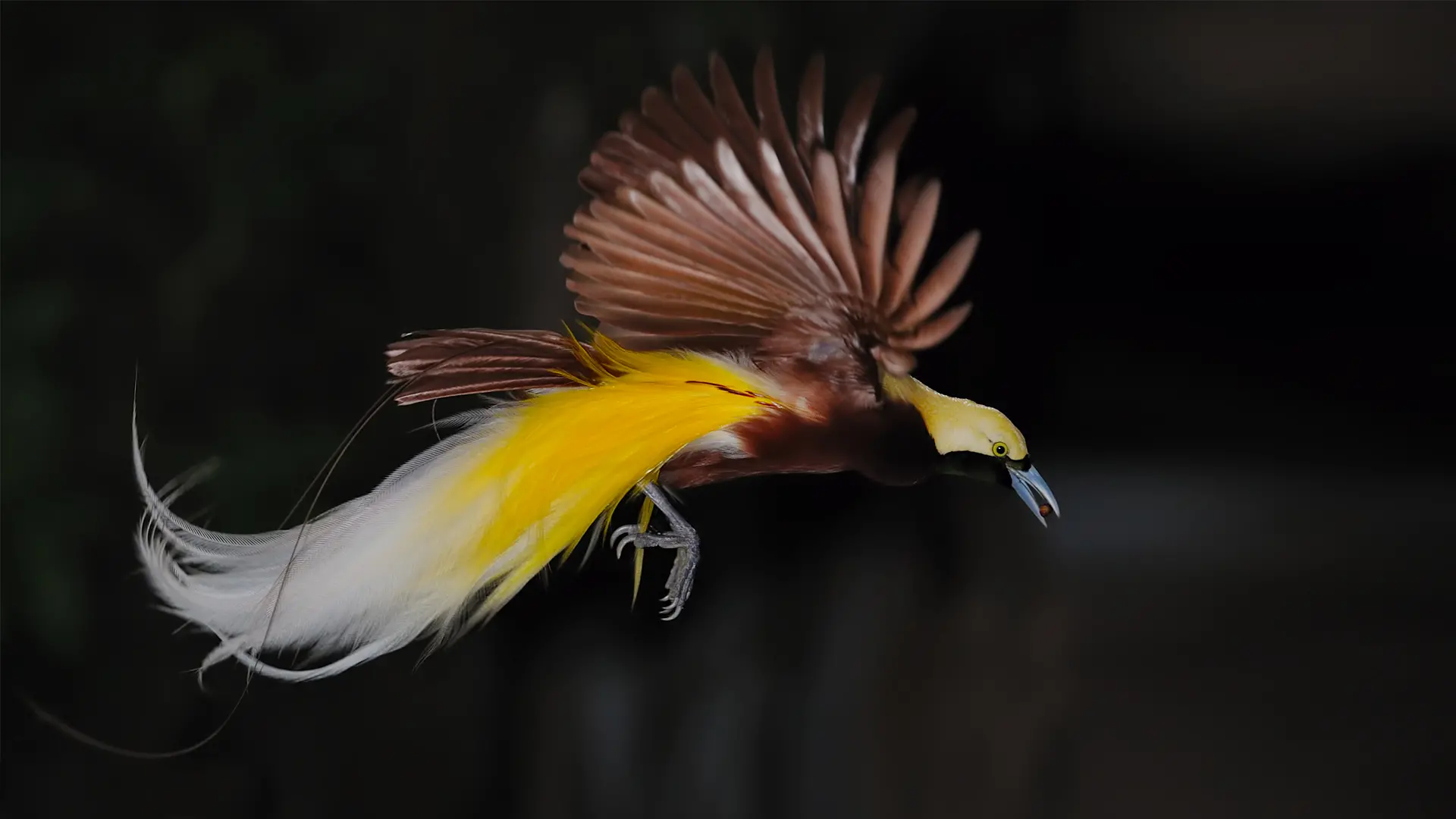
Food Sources: Insects, Fruits, and Nectar
- Fruits: Birds of paradise primarily rely on fruits from a variety of trees and shrubs within their habitat. The abundance of fruit-bearing plants in the rainforest provides them with essential sugars that fuel their high-energy lifestyle. This frugivorous diet supports both their vibrantly colored plumage and their active behaviors.
- Insects: Insects are crucial for a balanced diet, providing necessary proteins that contribute to reproduction and overall health. Birds of paradise consume a variety of insects, such as beetles, ants, and grasshoppers. Their agility in foraging among foliage allows them to supply energy requirements while enhancing their survival strategies.
- Nectar: As adept nectar feeders, many birds of paradise capitalize on the availability of flowering plants. Their specialized beaks facilitate efficient nectar extraction, allowing them to thrive on sugary sources while simultaneously acting as pollinators in their ecosystems.
Foraging Techniques of Bird of Paradise
Birds of paradise have evolved several distinct foraging techniques, enabling them to maximize food intake while minimizing energy expenditure. These methods include:
- Gleaning: This technique involves picking insects and fruits off leaves and branches. Birds will often move deliberately through the foliage, carefully inspecting each branch for potential food items.
- Hawking: Some birds engage in mid-air hunting, known as hawking, where they swoop down to snag insects on the move. Agility and speed are crucial in this approach, and many species showcase remarkable aerial prowess.
- Floral Foraging: The nectar-feeding behaviors exhibited by birds of paradise mimic those of hummingbirds. They hover near flowers while extending their beaks to extract nectar, facilitating pollination as they travel from bloom to bloom.
Through these foraging behaviors, birds of paradise illustrate their remarkable adaptability and efficiency in sourcing food from the lush ecosystems in which they reside.
Conservation Status and Threats
The conservation status of birds of paradise varies significantly, with many species classified as endangered or vulnerable due to a myriad of threats. Habitat loss, hunting, and climate change pose substantial challenges to their survival, necessitating urgent conservation measures to ensure their existence for future generations.
Endangered Species and Conservation Efforts
Birds of paradise epitomize both beauty and fragility in our ecosystems. Their status as emblematic species of the rainforest highlights the urgency of conservation efforts. For example, the King of Saxony bird of paradise is classified as endangered, primarily due to severe habitat degradation and hunting practices. Others, such as Wilson’s bird of paradise, face threats from both deforestation and hunting, underscoring the importance of combined conservation initiatives.
- Habitat Preservation: Establishing protected areas and enforcing strict conservation regulations is essential to safeguard habitats, allowing these birds to thrive in their natural environments without interference.
- Community Engagement: Raising awareness about the significance of preserving biodiversity and promoting sustainable hunting practices among local communities fosters a collective responsibility towards conservation.
- Research and Monitoring: Continuous research plays a vital role in identifying populations at risk and assessing the effectiveness of conservation measures. Implementing data-driven approaches ensures the long-term success of these initiatives.
As we develop a better understanding of the unique ecological roles birds of paradise fulfill, implementing comprehensive conservation strategies becomes essential.
Habitat Loss and Its Impact on Bird of Paradise
Habitat loss is arguably the most pressing threat to birds of paradise, primarily driven by expanding agricultural practices, logging, and urbanization. The rich tropical rainforests that support these unique species are rapidly disappearing at an alarming rate.
- Deforestation: Logging and conversion of forests into agricultural lands reduce the available nesting and foraging sites crucial for the survival of birds of paradise.
- Fragmentation: Habitat fragmentation follows deforestation, disrupting migratory patterns and isolating populations. Isolated populations are more vulnerable to genetic bottlenecks and local extinctions.
- Interconnected Ecosystems: The dependency of birds of paradise on specific habitats makes them sensitive indicators of overall ecosystem health. As these critical habitats vanishe, the cascading effects on biodiversity can lead to further risks for the entire rainforest ecosystem.
- Restoration Efforts: Addressing habitat loss is paramount. Implementing reforestation projects and environmental restoration efforts can reinvigorate disrupted ecosystems, creating new life-supporting environments for birds of paradise and other species.
Recognizing the intrinsic connection between healthy habitats and thriving bird populations emphasizes the essential role humans can play in conservation.
Cultural Significance and Symbolism
Birds of paradise are not only emblematic of beauty in the natural world, but they also hold immense cultural significance across various societies. Their striking appearances and behaviors have earned them a special status in art, literature, and indigenous cultures, serving as symbols of various ideals, including beauty, freedom, and spirituality.
Representation in Art and Literature
In art and literature, the birds of paradise serve as potent symbols, conveying themes of beauty and grace. Artists have often depicted their stunning plumage and captivating behaviors, reflecting the inherent allure of these creatures. Using their forms as subjects, painters can evoke emotions and admiration, while writers may weave their majestic imagery into narratives that explore personal growth and transformation.
- Inspirational Motifs: The birds inspire various artistic expressions in fashion, jewelry, and craftsmanship, with their vibrant colors often echoing ideals associated with prosperity and allure.
- Literary Symbolism: In literature, birds of paradise can represent personal freedom, the pursuit of dreams, and the quest for deeper meaning in life. Such narratives serve to reflect the complexity of human emotions and aspirations.
Role in Indigenous Cultures and Traditions
In Papua New Guinea, where a majority of birds of paradise species are found, these birds hold profound significance in various indigenous cultures. Their unique beauty is interwoven with spiritual beliefs and traditional customs.
- Spiritual Messengers: Birds of paradise are often viewed as messengers from the spirit realm, embodying connections to the divine. Their display and mating rituals symbolize themes of love, connection, and kinship.
- Ceremonial Use: The feathers of birds of paradise are utilized in traditional clothing and ceremonial adornments. They symbolize status, beauty, and cultural identity within indigenous communities.
- Integration into Practices: In marriage ceremonies, the elaborate courtship displays of the birds are mirrored in human rituals, highlighting the significance of open displays of affection and the union of souls.
The multifaceted meanings attributed to birds of paradise encompass a beautiful blend of nature and human culture, emphasizing the intrinsic connection between wildlife and the values of human societies.
In conclusion, the birds of paradise captivate our imagination, reflecting the wonders of evolution and the complexities of nature. Their vibrant appearances and intricate behaviors have inspired generations, while their significant roles in ecosystems and cultures underscore the critical importance of conservation. As we navigate the challenges posed by habitat loss and the intertwined fates of these remarkable birds and their environments, it becomes clear that protecting their future is essential for maintaining the rich tapestry of life on our planet.

